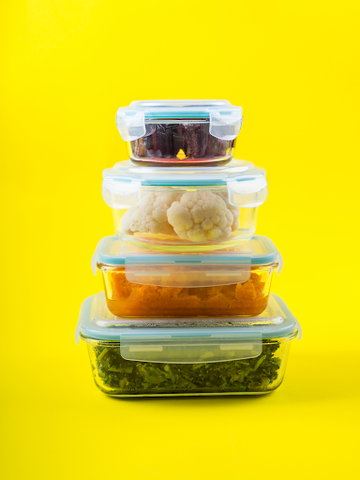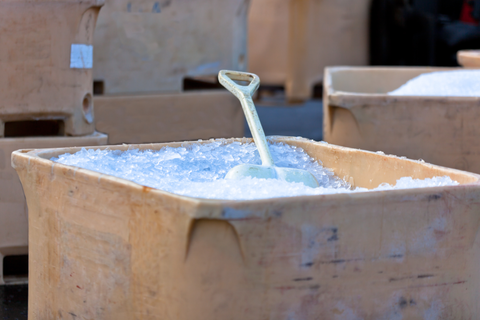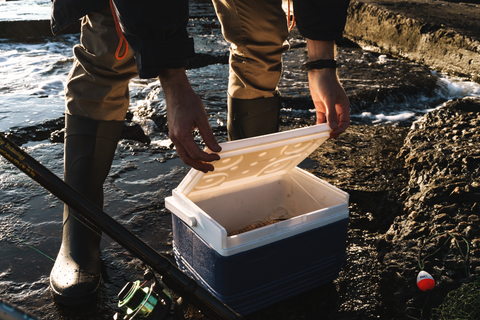When your refrigerator breaks down and you don't have a cooler, keeping food cold becomes a challenge. But there are ways to do it without fancy equipment. In this blog, we'll show you how to do so, along with some important safety tips. Let's get started!
How to Keep Food Cold Without a Cooler or Refrigerator

If your refrigerator breaks down and you don't have a cooler, here are some easy ways for keeping food cool:
1) Wrap Your Food
Credit: Envato Elements/ ozaiachin
When you need to keep food fresh and cold for a short time, a quick solution is wrapping it in wet fabric. You can either use a towel or a cotton cloth. To make sure your food stays fresh for longer and the cloth stays wet, keep it in a shady, cool spot.
2) Make a Zeer Pot
Using a zeer pot to keep food ice cold is an old trick that works by evaporative cooling. This is a process where water changes from a liquid to a vapor, taking away heat in the process, which makes the surrounding area cooler. Here's how you can make a zeer pot:
- You'll need two unglazed ceramic pots, one bigger than the other. You'll also need some sand and water.
- Fill the bottom of the bigger pot with a few inches of sand.
- Place the smaller pot inside the larger one.
- Fill the space between the pots with sand.
- Spray some cold water on the sand to cool food.
- Cover the pots with a wet cloth or a ceramic lid.
- Place your food in the smaller pot.
Note: To keep your food cold, make sure to constantly check that the sand is wet. Also, to prevent the pot from getting too hot in the sun, make sure to place it in the shade.
3) Use Dry Ice Packs
Dry ice packs are excellent for keeping your food and drinks cold for hours. To use them, just soak the packs in water until the cells expand, and then freeze for up to 12 hours. Once frozen, place them with your cold food to maintain their cold temperatures.
To extend the life of the packs, place them in an insulated bag along with the cold food and out of direct sunlight. If you don't have an insulated bag, you can use insulated liners instead.
4) Dig a Root Cellar
Root cellars are commonly used for storing root vegetables and perishables like dairy products, cheese, and yogurt. They're made by digging a trench, adding shelving, covering it with logs or lumber, and adding a large trap door.
Building a root cellar can be quite a task. However, you can create a simpler, smaller version using the same principles. Here's how to make your own DIY root cellar:
- Dig a hole big enough to hold your food.
- Line the hole with wooden planks.
- Wrap your food in plastic bags and place it in the hole.
- Add dry ice packs with the food.
5) Make an Ice Box
Credit: Envato Elements/ nzooo
An ice box works on the same principles as a cooler but instead of actually buying one, you're making a DIY one. Here's how to make your own ice box:
- Look for a large, sturdy box that can fit your food items. A cardboard box can work, but a plastic storage container will offer better insulation.
- Line the inside of the box with foam boards or layers of aluminum foil to help insulate it.
- Fill sealable plastic bags or water bottles with water and freeze them overnight to make ice packs. You can also use a bag of ice cubes. Place your DIY ice packs or ice cubes at the bottom and around the sides of the box.
- Place your food items in the center of the box, ideally in an airtight container to avoid any water damage from the melting ice.
- Close the box tightly. For additional insulation, you can wrap the entire box in blankets or towels.
6) Use a Vacuum-Sealed Bottle
Due to its insulation properties, vacuum-sealed bottles are excellent for keeping liquids or smaller food items like cheese sticks, grapes, or fruit slices cold. Here's how you can use them effectively:
- Select a vacuum-sealed bottle large enough to hold the items you wish to keep cold.
- Before using the bottle, fill it with ice water and let it sit for a few minutes.
- After pre-chilling, empty the ice water and immediately pack your cold items into the bottle. If you're packing food, you might want to wrap it in plastic wrap or place it in a small baggie to keep it dry.
- Close the bottle with its lid to ensure an airtight seal.
Tips for Preserving Food Without a Fridge or Cooler
When storing food without a refrigerator or a cooler, keep the following tips in mind:
1) Store Food in Cool, Shady Areas

Credit: Envato Elements/ tenkende
The easiest way to keep food colder for longer is by storing it in cool, shaded spots like your basement or attic. When placing food here, remember to use vacuum-sealed containers to stop rodents from being drawn to it.
2) Maintain the Proper Temperature of Food

Credit: Envato Elements/ Marowl
When keeping cold food, it's important to store it at 40°F or below. Foods, especially meat, can spoil and become harmful if not kept at this temperature. To check the food's temperature and make sure it's safe to eat, you can use a fridge thermometer.
3) Pack Food Close Together

Credit: Envato Elements/ ta_bu
Regardless of the technique you use to keep food chilled without a cooler or refrigerator, be sure to pack the food tightly. Food that is not tightly packed will warm up and spoil faster.
4) Minimize Opening Containers
Credit: Envato Elements/ cadymvdrobot
Limit the number of times you open containers to help maintain the internal temperature. Each time you open a container, warm air enters, causing the temperature to accelerate and speeding up food spoilage.
FAQs
How long can food stay cold without a refrigerator or cooler?
This will depend on the surrounding temperature, insulation method, and type of food. Generally, with proper techniques, food can stay cold for several hours to a day.
How often should I check on my food when using these techniques?
Aim to monitor every few hours, especially in warmer conditions.
Summary
To prevent the spread of bacteria, you must maintain the constant temperature of cold food. If you don't have a cooler or your fridge has broken down, use the above 6 techniques for food storage. To shop for insulated liners and dry ice packs that will help you keep your food cooler for longer, visit Nice Packs.






